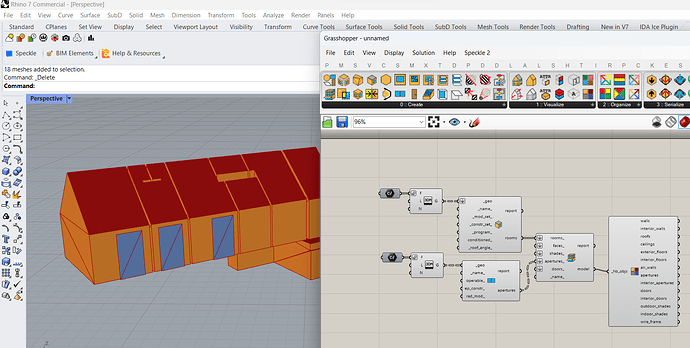Quite often I get IFC-files that I need to convert into HBjson and wonder how to do this. I am mostly interested in IfcSpaces, Windows, Doors and shading objects. I tried to use IfcOpenShell https://ifcopenshell.org/ and converted IfcSpaces to geometry and then into rooms and 2nd space boundaries for aperturers. The result was not too bad but I got some triangulation and since some of the space boundares was missing I wonder if I could use the windows, doors and curtain wall elements directly. Here is a proof of concept. The real problem is of course that the IfcSpaces might be non closed or does not exist at all.
Hi @maxt ,
I imagine that @mostapha might have some thoughts for you here since he’s been talking to many people about interoperability challenges these days. Just going off of instinct here, I would ask why you settled on IFC as your preferred file format for interoperability since there’s probably a better and more reliable format that you could be using if the goal is to get analytical models for BEM. If it’s particularly for integration with IDA-ICE, you should really check out the Pollination Rhino plugin and the newly-added capability for Exporting to IDA-ICE.
Also, generally speaking, I would highly recommend the Pollination Rhino plugin if you are looking for automated ways to clean up your geometry to the point that it’s valid for energy simulation. Just off the top of my head, the PO_RebuildRooms command would help you merge all of those coplanar triangulated Faces into something cleaner.
Hi @maxt - I second what @chris said that because of the clean-up routines, it is probably best to go through the Rhino plugin. You should be able to fix the geometry in your screenshot quickly in Rhino.
I think the main problem is the missing IfcSpaces. Without user interaction, it is really hard to create them correctly. And then if we want to do that, I would rather to import the IFC geometry to Rhino and fix those spaces in Rhino quickly and then everything should work with Pollination and Ladybug Tools.
